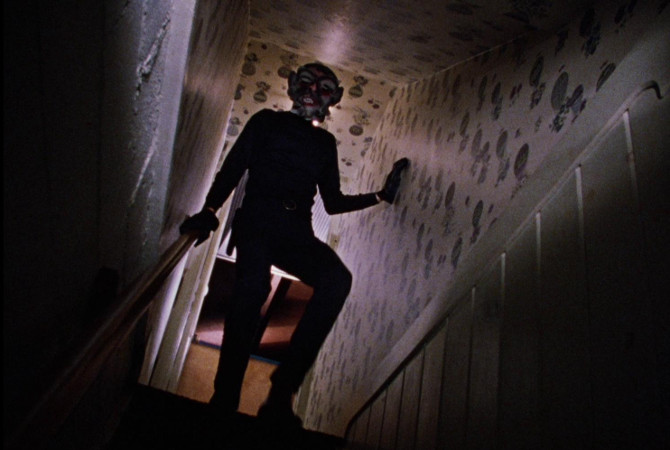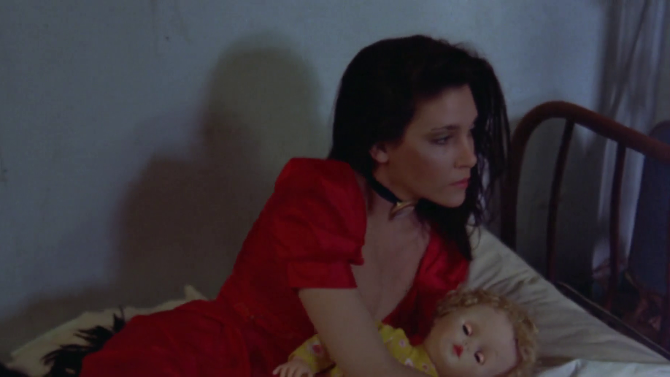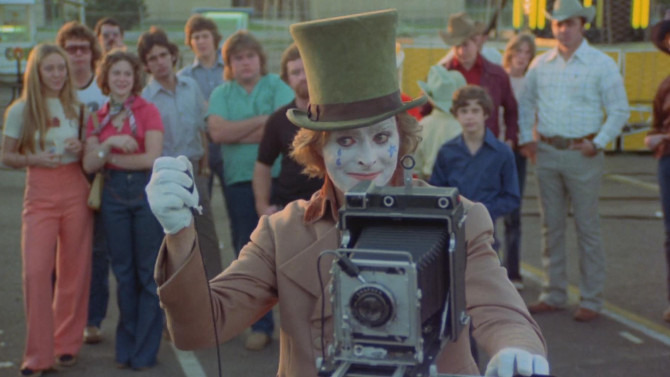This second Missed the Bloody Cuts feature of 2018 (which follows the article posted on September 23rd) will also be the closing chapter of this year’s run of horror movies leading up to Halloween. And it has been nothing but a violently good run – spooky comedies from the Golden Age of Hollywood, cult classics, B horror flicks, British takes on the genre and everything in between. . . and this second set of reviews (which falls just below the 7.0 rating) resuscitates two lesser known 1970’s motion pictures back from the grave.
1972’s Season of the Witch (originally released as Hungry Wives and then re-released as Jack’s Wife) is the third film from zombie mastermind George A. Romero, a witch-tinged drama with horror themes. Following housewife Joan Mitchell (Jan White), the woman is haunted by her subconscious. . . living in a sedate marriage with a controlling husband who is oft on the road, Jack (Bill Thunhurst), the troubles of her bland life come out in her peculiar, disorienting dreams.
With a daughter, Nikki (Joedda McClain), that is grown and attending college (she is still living at home), Joan feels even less relevant in this world. Her older friend, Shirley Randolph (Ann Muffly), who is even more depressed, learns of a witch who gives tarot readings – curiosity draws the pair to the card reader.
This encounter draws the staid woman to the dark arts, Joan finding a freedom and passion that she has long been missing in her life. . . despite the new direction, it has not helped curb her dreams, in fact, they seem to be getting more lucid. On one of her husband’s extended work trips, she decides to spice things up by inviting her daughter’s student teacher, Gregg Williamson (Raymond Laine), over for a little tryst. With an ever more complicated situation (her daughter had run away from home just prior to her affair), how will Joan come to grips with her life? Is she actually becoming a witch, or is it all in her imagination?
Romero’s skills are clear; the film, at its best, thrives while walking the line between reality and this fugue state (sharp editing, jarring shadow and light, unnerving shots, a certain undistinguishable quality that is hard to ignore – drawing the audience in). . . Joan slowly becoming less and less clear as to what is real and what is a dream. Where the movie struggles – its wordy, lackluster script drags us right out of those mesmerizingly spooky and wordless nightmares. Funnily enough, the distributors who changed the title to Hungry Wives, attempted to market it as a softcore pornography film (despite the fact it is not even close – Romero was unwilling to shoot two graphic lovemaking scenes, despite pressure from the top brass), the humour comes from the fact that sometimes the dialogue is so bad it could be right out of a porno.
Another nice touch finds Donovan’s “Season of the Witch” used as Joan becomes more entrenched in her witchcraft, the psychedelic, trippy rock tune a perfect conduit for the feature’s post-hippie haze. In many ways a feminist tale (Romero was influenced by the second wave of feminism coming out of the sixties), Season of the Witch is a strong, female-centric feature that finds a woman regaining her power in a most horror-centric way. With a superb ending, it is an important film for horror and Romero fanatics, though not without its pitfalls. . . so give this season a chance, it is no accident that this witchy woman is still being talked about.
Co-writer/director Robert Allen Schnitzer’s The Premonition (1976) fuses a familial drama with parapsychology (that is, the study of inexplicable mental phenomena such as telepathy) – its roots in the struggles of one family while the supernatural aspects provide the hook. Also pulling in an art house element (Schnitzer was influenced by the likes of Fellini, Bergman, and other European masterminds), his meandering narrative is a visually splendid curiosity.
A two pronged tale, Sheri (Sharon Farrell) and Professor Miles Bennett (Edward Bell) have long struggled to conceive. . . deciding to adopt, it has been five years since they took in quiet cutie Janie (Danielle Brisbois); while the dark side of the moon finds two individuals who have long been troubled with mental issues, Andrea Fletcher (Ellen Barber) and Jude (Richard Lynch), plotting to kidnap the girl – as you might have guessed, Andrea is Janie’s birth mother.
The former live a quaint, staid life, something that, when combined with Sheri’s ever-growing paranoia, gives Miles the opportunity to step out on her. . . enjoying his time a little too much with a new parapsychologist who has just arrived from Britain, Dr. Jeena Kingsly (Chitra Neogy); while the latter couple have a more transient life. . . Andrea residing in a day to day hostel-like rental while Jude lives in a ramshackle trailer – a pantomime clown photographer working for the local carnival.
We soon learn that Sheri has the ability to have some sort of premonitions. . . a disturbing parapsychological power that begins to warn her of the impending doom that is the unhinged couple. When her daughter does disappear, their best chance seems to be this unfathomable ability.
Building a dream-like landscape, Schnitzer utilizes vivid colour and intriguing visuals to make for a mesmerizing world. Developing unique practical effects (grotesque stab wounds, a mirror that mysteriously freezes over in only a few seconds), the simple things are just as effective – Andrea’s striking red dress that she chooses on the night she plans on going to nab her daughter, or Jude’s measured, almost bewitching movements, which, when combined with his angular (often-white-with-makeup) visage, always gives the semblance that he is lingering on the precarious edge of the unhinged.
Though it definitely has some story issues (clunky, at times flawed, missing a few threads), its visual storytelling still makes for an interesting watch. Featuring some solid performances (Lynch and Barber), a brilliant, classically, almost operatic themed score by Henry Mollicone (it often fitting into the story in a diegetic way), and moments of parental terror, it may not add up to the prom queen of parapsychology horror films, but these threads do make for an almost finely woven film that will make you a believer.




